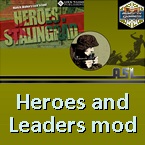asl3d
Posts: 6531
Joined: 2/6/2017
Status: offline

|
Japan Mitsubishi Ki-21 Type 97
The Mitsubishi Ki-21 or "Type 97 Heavy Bomber" began operations during the Second Sino-Japanese War participating in the Nomonhan Incident, and in the first stages of the Pacific War, including the Malayan, Burmese, Dutch East Indies and New Guinea Campaigns. It was also used to attack targets as far-flung as western China, India and northern Australia.
Production aircraft began to enter service in August 1938. Several improved versions followed before the production of the Type 97 ended in September 1944. A total of 2,064 aircraft were built, 1,713 by Mitsubishi and 351 by Nakajima. The Ki-21-Ia was used in combat in the war with China by the 60th Sentai from autumn 1938, carrying out long-range unescorted bombing missions in conjunction with the BR.20 equipped 12th and 98th Sentais. The Ki-21 proved to be more successful than the BR.20, having a longer range and being more robust and reliable. Two more Sentais, the 58th and 61st deployed to Manchuria in the summer of 1939 for operations against China, with aircraft from the 61st also being heavily used against Russian and Mongolian Forces during the Nomonhan Incident in June–July 1939.
The Ki-21-Ib was an improved version designed to address the armament issue by increasing the number of 7.7 mm Type 89 machine guns to five, and incorporating improvements to the horizontal tail surfaces and trailing edge flaps. In addition, the bomb bay was enlarged. The tail gun was a 'stinger' installation, and was remotely controlled. Also, the fuel tanks were partially protected with laminated rubber sheets. This was followed in production by the Ki-21-Ic with provision for a 500 L auxiliary fuel tank, fitted in the rear weapons-bay and one more 7.7 mm machine gun, bringing the total to six. Four 50 kg bombs were carried externally. To offset the increase in weight the main wheels of the Ki-21-IC were increased in size.
Front line units from mid-1940 were equipped with the Ki-21-IIa ("Army Type 97 Heavy Bomber Model 2A") with the more powerful 1,118 kW (1,500 hp) Mitsubishi Ha-101 air-cooled engines and larger horizontal tail surfaces. This became the main version operated by most Imperial Japan Army heavy bomber squadrons at the beginning of the Pacific War, and played a major role in many early campaigns. For operations over the Philippines the 5th, 14th and 62nd Air Groups, based in Taiwan, attacked American targets at Aparri, Tuguegarao, Vigan and other targets in Luzon on 8 December 1941. The 3rd, 12th, 60th and 98th Air Groups, based in French Indochina, struck British and Australian targets in Thailand and Malaya, bombing Alor Star, Sungai Petani and Butterworth under escort by Nakajima Ki-27 and Ki-43 fighters. However, starting from operations over Burma in December 1941 and early 1942, the Ki-21 began to suffer heavy casualties from Curtiss P-40s and Hawker Hurricanes.
To partially compensate, the Imperial Japan Army introduced the Ki-21-IIb, with a pedal-operated upper turret with one 12.7 mm Type 1 machine gun, redesigned cockpit canopies and increased fuel capacity. Although used in all fronts in the Pacific theater, it became clear by 1942 that the design was rapidly becoming obsolete, and was increasingly shifted away from front-line service. In spite of its shortcomings, the Ki-21 remained in service until the end of the war.

 Attachment (1) Attachment (1)
_____________________________
Semper fidelis
|
 Printable Version
Printable Version

































 New Messages
New Messages No New Messages
No New Messages Hot Topic w/ New Messages
Hot Topic w/ New Messages Hot Topic w/o New Messages
Hot Topic w/o New Messages Locked w/ New Messages
Locked w/ New Messages Locked w/o New Messages
Locked w/o New Messages Post New Thread
Post New Thread